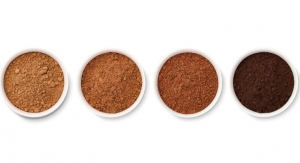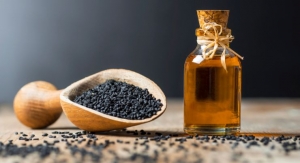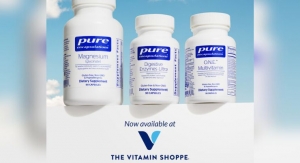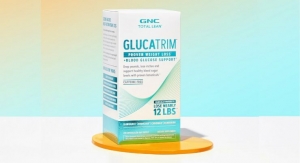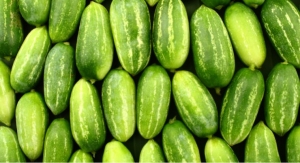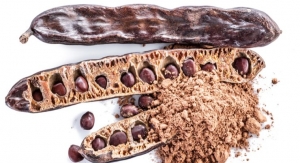The Health Dynamics of Diabetes
Of the key types of diabetes (see sidebar on page 56), type II is most frequently spotlighted because it is essentially preventable. This disease is deemed largely preventable by the medical community because it is understood to be a result of a lifestyle fraught with poor dietary habits, infrequent or no exercise, and other factors.
Pre-diabetes is the more recently used term to describe the state of elevated blood glucose levels; it is more formally known as impaired glucose tolerance or impaired fasting glucose, depending on which test is used to ascertain the condition. According to the ADA, the condition of pre-diabetes "almost always" exists prior to the full development of diabetes type II. Key point: "Research has also shown that if you take action to manage your blood glucose when you have pre-diabetes, you can delay or prevent type II diabetes from ever developing."
In summary, a lifestyle of sugar intake or foods that quickly turn into sugars can be blamed for pre-diabetic and type II states. The rise of industrialism has, for many Americans, wiped out the ability of attaining nature-based foods from the land, which the evolution of the human body has come to rely on to maintain homeostasis. As more sugar-laden processed and packaged (i.e., "convenient") foods displaced the wholesome diet, cases of diabetes type II began to incline sharply. After a meal, the body's master metabolic hormone-insulin-is called upon to chauffeur the glucose from the bloodstream to cells that rely on glucose for energy. In cases where the bloodstream is repeatedly clogged with major traffic jams of glucose, the body releases high levels of insulin to clear it all up. What often occurs is that insulin loses its ability to do this job effectively, thereby leaving behind more glucose in the bloodstream that eventually becomes stored as fat.
Glycemic response is the pathway by which insulin reacts with glucose. According to Richard Staack, PhD, of Cevena Bioproducts, Inc., Chicago, IL and Edmonton, Alberta, Canada, "Many of the foods we eat today contain carbohydrates that are broken down to glucose and rapidly absorbed from the intestine into the bloodstream. This rapid absorption of glucose leads to a high glycemic response or glycemic index (GI) and a consequent rapid secretion of insulin from the pancreas. Increased insulin levels are thought to be a key factor in the development of several diseases, including non-insulin dependent diabetes, cardiovascular disease, metabolic syndrome, and insulin resistance."
Several years ago, the theory of "Syndrome X" and its role in disease development, notably type II diabetes, became quite a hot topic. Ram Chaudhari, PhD, FACN, CNS, senior executive vice president and CSO Fortitech, Schenectady, NY, summarizes, "Insulin resistance, at the heart of type II diabetes, is also a key factor in the development of Syndrome X (also metabolic syndrome), which encompasses a series of conditions including visceral obesity, elevated triglycerides and elevated blood sugar."
Tim Romero, vice president of Integrity Nutraceuticals, Sarasota, FL, clarifies that people with abnormal levels of any of the following factors are considered to have Syndrome X: elevated waist circumference (35 inches or more for women, 40 inches or more for men); elevated triglycerides (150 mg/dL or higher); reduced HDL-cholesterol (< 40 mg/dL for men, < 50 mg/dL for women); elevated blood pressure (130/85 mm Hg or higher); and elevated fasting glucose (100 mg/dL or higher). "Current estimates," he stressed, "are that the metabolic syndrome affects over 26% of adults, or over 50 million Americans, and that it increases the risk for atherosclerotic cardiovascular disease up to three-fold, and the risk for type II diabetes up to five-fold."
However, there is still some scientific disagreement about the exact identity of Syndrome X, points out Kenn Israel, marketing director of Soft Gel Technologies, Inc. (SGTI), Los Angeles, CA. "Syndrome X has been the topic of some debate in the scientific community. While certain researchers question if the combination of abdominal obesity, deranged blood lipids, and insulin resistance is a syndrome, it is clear that this cluster of poor health indicators correlates with an increased risk of diabetes and heart disease. It is also clear that Syndrome X needs more research, however, failure to act when 60% of America is overweight is an abdication of our responsibility to support the general health of our population," he said.
Metabolic syndrome remains a hot research topic, with almost 150 studies published in the first couple of months this year, according to Frank Sch�nlau, PhD, director of scientific communications, Horphag Research, Cointrin, Switzerland. "The focus clearly is on preventing metabolic syndrome from turning into full-fledged type II diabetes. People need to understand that metabolic syndrome is a nutritional disease, and that it is not an unavoidable fate but something they can take care of themselves. Smaller food servings, with less refined sugar and hard fats, plus some physical exercise can turn people healthy. This has been shown in so many clinical studies."
More recently, another term coined by the non-profit organization, Shape Up America!-Diabesity-has garnered much attention, focusing on the relationship between obesity and diabetes type II, whereby the former exacerbates the latter. "Diabetes costs form the lion's share of the $117 billion in annual costs attributed to obesity according to a recent report issued by the U.S. Surgeon General's office," says Barbara Moore, PhD, president of Shape Up America! "Type II diabetes is one condition that is worsened by further weight gain and is actually improved by weight loss."
The Diabesity theory was galvanized by a 2002 study by Rand Institute researcher Dr. Roland Sturm, who evaluated major risk factors of diabetes type II development and found that obese individuals have a five-fold greater risk of the disease than people who smoke, and their weight status confers a risk higher than the effects of two decades of aging. (Health Affairs, 2002;21(2):245-253)
Formulators may choose from a number of nutraceutical ingredients that have considerable epidemiological and clinical merit in addressing the factors that impact healthy blood glucose. Supplements may contain one ingredient, or combine several that work to target a specific pathway, such as glycemic index. (Editor's note: Nutraceuticals World will publish a more comprehensive overview of the glycemic index market in the July/August issue.)
Addressing Glycemic Response
There are several compounds with solid research supporting their viability in addressing healthy glycemic index. Viscofiber from Cevena Bioproducts, FenuLife from Acatris Inc., Minneapolis, MN, and Natureal from GTC Nutrition, Golden, CO, work to address the diabetic condition through the glycemic pathway via the provision of healthy fiber.
Viscofiber is the highest-viscosity beta-glucan supplement currently available, according to Cevena's Mr. Staack.
Since the 1970s, the viscous properties of beta-glucans have been studied extensively for their ability to slow the rapid increase in blood glucose and insulin. The property of higher viscosity in the stomach slows gastric emptying, thereby slowing the absorption of glucose into the bloodstream. Beta-glucans form a viscous gel in the stomach and small intestine with food, making it more difficult for digestive enzymes to breakdown food, which also delays the release of glucose; they may also form a protective layer along the intestinal wall which slows absorption. When digestion is delayed, blood sugar increases more slowly, causing a low insulin response.
"Clinical studies with Viscofiber have corroborated the findings of previous studies on the effects of beta-glucan on the glycemic index," Mr. Staack explained. "The high molecular weight and high viscosity of Viscofiber lead to a significant reduction in plasma glucose and insulin levels after a meal, as demonstrated in two clinical studies. In fact, a dose-response study with Viscofiber further demonstrated that the ability of Viscofiber to reduce the glycemic response was directly related to the quantity and viscosity of beta-glucan consumed."
FenuLife, says Jocelyn Mathern, RD, technical specialist, Acatris, is an odorless extract of fenugreek galactomannan, which gives formulators large amounts of galactomannan (a type of soluble fiber), and thus can help diabetic individuals by lowering the glycemic response to a single food or whole meal. FenuLife's galactomannan also forms a viscous gel in the stomach and the intestinal tract, which slows down the absorption of sugar into the bloodstream. This can help individuals avoid high peaks in blood sugar levels after a carbohydrate containing meal.
In addition to many studies showing beneficial effects of fenugreek galactomannan on blood sugar levels, Acatris has initiated a clinical research program for FenuLife. In a study done with healthy subjects, FenuLife lowered the glycemic response to a carbohydrate-containing beverage. Another study in diabetic subjects found that FenuLife was able to lower fasting blood sugar levels.
Natureal Oat Bran Concentrate from GTC Nutrition is another nutraceutical high in beta-glucan content. Coni Francis, PhD, RD, scientific affairs manager, notes, "Natureal oat bran products bring benefits to weight control, healthy cholesterol metabolism and heart health through the viscous effects of beta-glucan. Natureal increases the viscosity of stomach contents, which slows stomach emptying, prolongs the absorption of energy from a meal, and retards the absorption of fat. This exerts strong control over insulin release, which reduces cholesterol production, extends satiety and benefits heart health. These effects persist in the small intestine to increase and extend meal satisfaction, which results in less hunger and helps stave off the desire to snack."
The Chromium Connection
Perhaps the most long-standing compound researched for blood glucose regulation is chromium. Fortitech's Dr. Chaudhari says this essential trace mineral helps play a significant role in sugar metabolism. "Reasonably good evidence suggests that chromium supplementation may help bring blood sugar levels under control in both type I and type II diabetes. The usual recommended therapeutic dosage of chromium picolinate ranges between 400-600 mcg daily," he said.
There are two major types of chromium manufactured responsibly by long-standing suppliers, and each form has science and longevity of successful use by consumers.
ChromeMate from InterHealth Nutraceuticals, Benicia, CA, (chromium nicotinate, chromium polynicotinate or niacin-bound chromium) is a patented, oxygen-coordinated, niacin-bound chromium complex that plays an important role in proper insulin function and maintenance of healthy blood sugar, according to William "Skip" Seroy, president and CEO. "The biologically active form of chromium is called Glucose Tolerance Factor (GTF), and has been identified as a chromium-nicotinic acid complex. It is responsible for increasing the efficient action of insulin in the body. It helps insulin metabolize fat, turn protein into muscle and convert sugar into energy. In fact, chromium-activated insulin increases the amount of blood sugar available for energy production nearly 20-fold."
Nutrition 21, Purchase, NY, manufactures both Chromax and a distinctive combination of chromium picolinate and biotin called Diachrome, which is specifically geared toward the diabetic management market. It is formulated to help insulin process sugars more effectively.
Cinnamon extract contains a significant source of chromium and is worth mention in this section. "Although a rich source of chromium, the beneficial effects of cinnamon on glucose control do not appear to be the result of chromium per se, but rather a specific water-soluble extract containing doubly-linked polyphenol type A polymers," Mr. Romero pointed out. "Based on ongoing research from USDA scientist Dr. Richard Anderson, as well as a recently completed study by the Ohio Research Group, Cinnulin PF has shown improvements in glucose regulation."
Mr. Romero added, "A recent placebo-controlled, double-blind clinical trial was performed on 22 adults with pre-diabetes (a fasting blood glucose level of 100-125 mg/dL). Lead researcher Dr. Tim Ziegenfuss ascertained whether supplementing with Cinnulin PF would affect blood sugar levels, as well as lipid profiles (i.e., cholesterol levels), and body composition. After consuming 500 mg/day of Cinnulin PF for 12-weeks, subjects in the Cinnulin PF group showed significant decreases in fasting blood sugar (-8.4%), systolic blood pressure (-3.8%), and body fat (-0.7%)."
Plant-Based Solutions
There is a handful of plant-based supplements that also play a role in promoting healthy blood glucose.
The extract of the leaves of the banaba, a tropical plant growing predominantly in the Asian tropics, has "actions in stimulating glucose transport into cells and can thereby help maintain healthy blood sugar levels," explains Albert Bustos, marketing manager for DNP, Inc., Whittier, CA. "For some people, fluctuations in blood sugar are related to appetite hunger and various food cravings for carbs, such as breads and sweets. Banaba leaf extract may help balance those fluctuations."
SGTI has two primary Banaba leaf extract products for blood glucose regulation, GlucoFit (recently known as GlucoTrim) and GlucoHelp. GlucoFit contains 1% corosolic acid and GlucoHelp contains 18% corosolic acid, which is the primary active compound that supports a blood glucose regulatory mechanism called facilitative glucose transport, according to Mr. Israel. "Corosolic acid stimulates the translocation of glucose uptake mediators, specifically GLUT-4 proteins, to the cell membrane. GLUT-4 allows insulin and glucose to enter the cell. Poor GLUT-4 function is an aspect of insulin resistance and may figure prominently in the development of diabetes."
Mr. Israel claims SGTI has funded clinical research on GlucoFit and GlucoHelp. Currently, some of this work is pending publication. GlucoFit has been clinically tested at a dose of 24 mg twice a day. In soft gel form it produced significant impacts on blood glucose levels and resulted in weight loss. "One of the most interesting aspects of GlucoFit is that it produced a memory effect. In other words, its effects lasted after subjects discontinued use of the herbal extract. GlucoHelp has been tested at a dose of 56 mg once per day and may be most effective when taken before a long period away from food such as before nightly rest," he said.
According to Dr. Sch�nlau, Pycnogenol French maritime pine bark extract has been used since the 1980s in Europe to treat diabetic retinopathy. During this time, many patients found that their blood glucose lowered. In one study, 30 diabetics showed that 50 mg Pycnogenol a day over three weeks significantly lowered fasting blood glucose, as well as blood glucose after a meal. Doubling the dose to 100 mg for another three weeks exceeded the glucose-lowering effect of 50 mg, but wasn't twice as effective. These results were published in a 2004 issue of Diabetes Care, which is published by the ADA. Another clinical study, published in Life Sciences in 2004, demonstrated that Pycnogenol, administered in conjunction with a standard anti-diabetic medication (metformin), further lowers blood glucose.
Bitter melon, also known as ampalaya fruit, is said to have been used by traditional healers to address diabetes. Since the 1950s, more than 200 studies on bitter melon have been conducted, and many of those have focused on its hypoglycemic action. According to information from FulLife Natural Options, Inc., a manufacturer of bitter melon tea and capsules, scientific evidence suggests that bitter melon's seeds and fruits improve glucose tolerance and decrease insulin resistance.
Steve Siegel, vice president, Ecuadorian Rainforest, LLC, Belleville, NJ, explains that, "three active constituents in bitter melon known as steroidal saponins (charntin, insulin-like peptides, and alkaloids) are believed to be responsible for the blood-sugar lowering actions. It is these actions that assist those with diabetes."
Paractin, from HP Ingredients, Bradenton, FL, is a patented blend of Andrographis paniculata, containing a blend of andrographolides, 14-deoxandrographolides, and neoandrographolides. Annie Eng, president, HP Ingredients, says that this combination is clinically proven to activate peroxisome proliferator-activated receptor-gamma (PPAR-gamma), a member of a family of intranuclear DNA-binding proteins "that correlate with glucose-lowering potency and increases cellular uptake of glucose mainly in skeletal muscle, the major tissue for glucose disposal.
"As transcription factors, PPARs regulate the expression of numerous genes and affect glycemic control, as well as lipid metabolism, vascular tone and inflammation. PPAR-gamma is known to heterodimerize with another intranuclear protein, the retinoid X receptor (RXR), enabling PPAR-gamma to interact with the DNA sequences controlling insulin-sensitive genes," Ms. Eng explained. "PPAR-gamma regulates glucose homeostasis and insulin sensitivity. Low levels of PPAR-gamma expression have been detected in adipose tissue for diabetes patients. By activating PPAR gamma in adipocytes, Paractin may help maintain healthy blood sugar levels."
Maitake mushroom, says Donna Noonan, vice president of marketing for Maitake Products, East Rutherford, NJ, yields an extract known as SX Fraction, which has demonstrated a range of actions that "makes it uniquely suited for Syndrome X and type II diabetes. These actions include lowering high blood pressure, cholesterol and triglycerides, assisting in healthy weight loss, significantly lowering blood glucose levels and improving cellular sensitivity to insulin."
Future of Category Assured
The market for supplements and functional foods addressing healthy blood sugar appears to have a strong future, according to many industry experts.
"Sadly," observes InterHealth's Mr. Seroy, "diabetes has reached epidemic proportions in this country, primarily due to obesity, even among our youth. Traditionally, type II diabetes has been regarded as a disease associated with aging, so the graying of the Baby Boomers will undoubtedly continue to increase the rate of this condition in adult populations as well. Given the adverse side effects and expense of many pharmaceutical products, consumers are looking for natural and healthy alternatives to deal with this critical problem."
The continuing escalation in the awareness of the rapid increase in the occurrence of diabetes, obesity, and metabolic syndrome "will likely create a robust market for dietary supplements that have supportive impact on healthy sugar metabolism," Mr. Israel said. "Clearly, the market failure of low-carb products also creates an opportunity for new development in the functional food category." In fact, Mr. Israel pointed out, the low-carb fad may be replaced by products geared toward glycemic index. If this category catches on, he says it will likely create new opportunities for nutraceutical manufacturers producing products that support healthy blood glucose metabolism.
Fortitech's Mr. Chaudhari sees a bright future in the context of glycemic index-based products. He also sees promising developments in the area of complex carbohydrates with controlled releases of glucose to sustain energy levels. He also highlighted new developments in the herbal segment where specific active components have been isolated to make dietary approaches to diabetes much easier than before.
Acatris' Ms. Mathern believes the future will define the role of good and bad carbohydrates. "Diabetes is a disease that is related to diet, so food plays a large role in the management of diabetes," she said. "Health professionals and consumers are starting to pay more attention not only to the amount of carbohydrates, but also the type of carbohydrates in the diet. This is where things like glycemic index and slow carbs come into play."
A more "macro" outlook on the healthy blood glucose/diabetes market takes into consideration the connection between dietary supplements and foods. After all, the wrong foods for too many years constitute the main culprit of pre-diabetes, metabolic syndrome and diabetes type II, so it is therefore sensible to surmise that dietary supplements that address blood glucose levels can support a renewed healthy diet.

